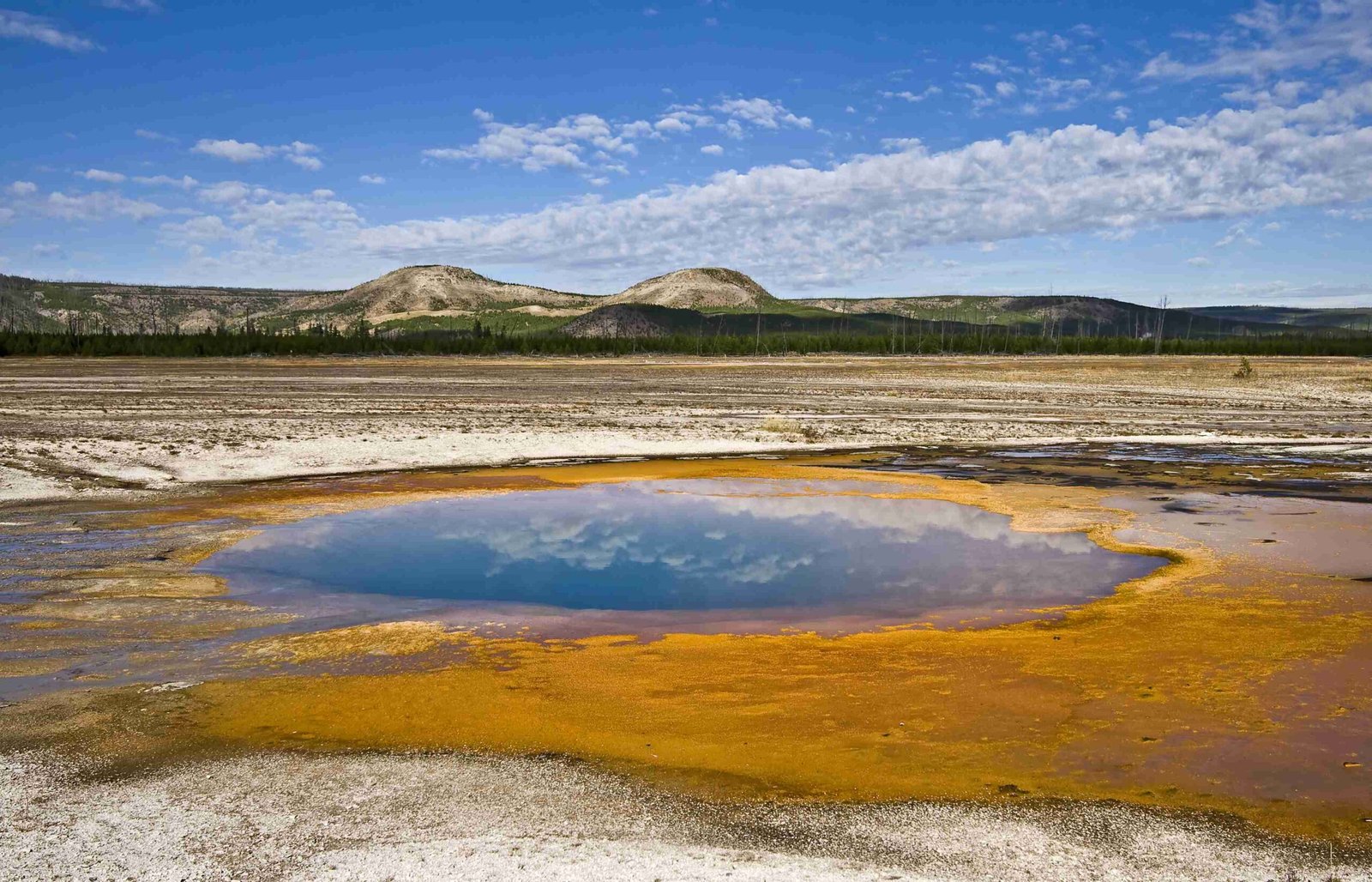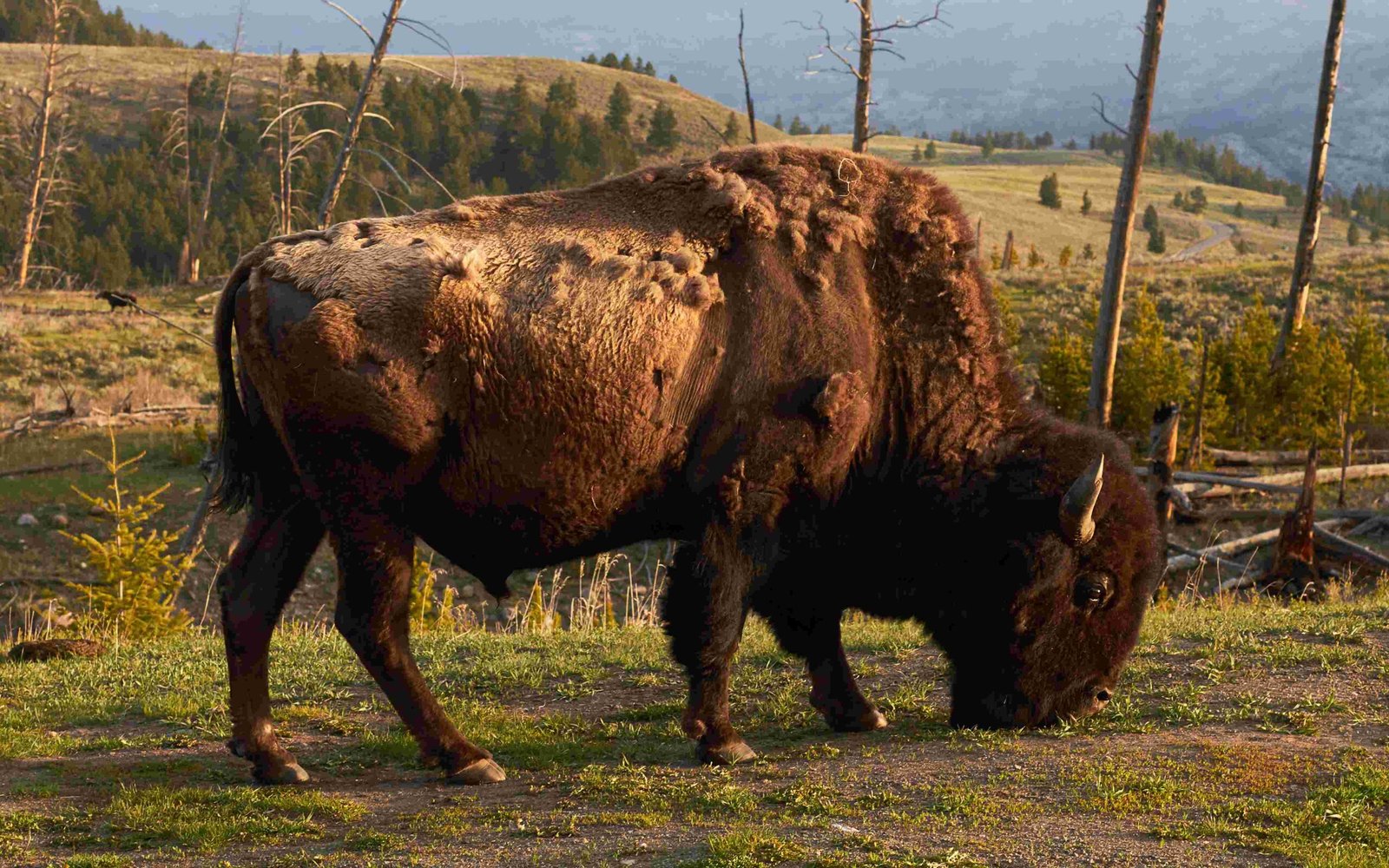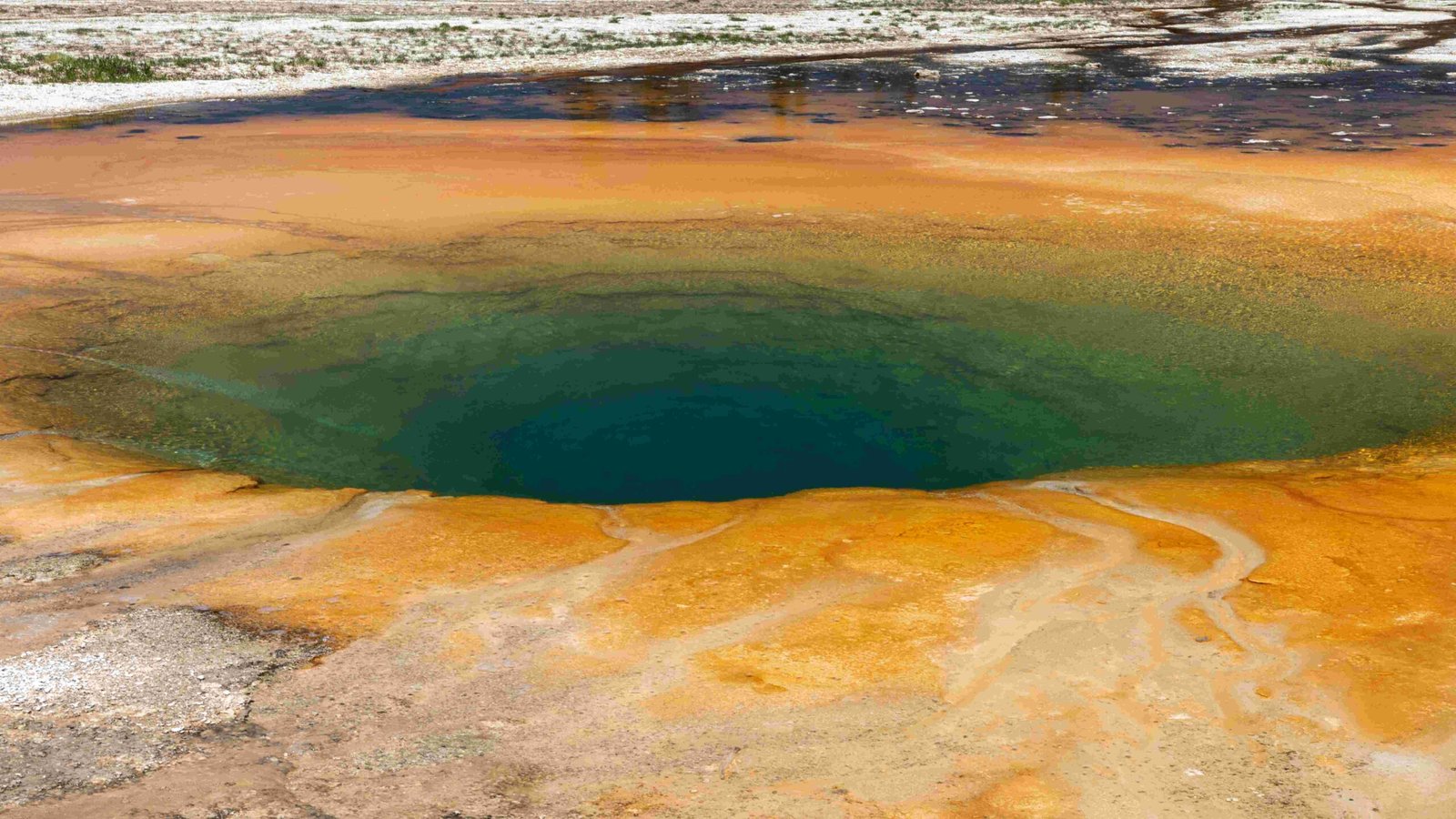Yellowstone National Park is a diverse ecosystem teeming with wildlife, lush forests, pristine lakes, and majestic mountains. Home to iconic species like bison, grizzly bears, and wolves, the park’s varied landscapes support a rich biodiversity. From the lodgepole pine forests to the expansive Yellowstone Lake, and the towering peaks of the Rocky Mountains, this natural wonder offers a unique blend of geological and ecological marvels.
What Animals Can You Find in Yellowstone National Park?

Yellowstone National Park boasts an impressive array of wildlife, including:
- Mammals:
- Bison
- Elk
- Grizzly Bears
- Black Bears
- Wolves
- Moose
- Bighorn Sheep
-
Pronghorn
-
Birds:
- Bald Eagles
- Trumpeter Swans
- Peregrine Falcons
-
Sandhill Cranes
-
Fish:
- Cutthroat Trout
- Arctic Grayling
-
Rocky Mountain Whitefish
-
Reptiles and Amphibians:
- Prairie Rattlesnakes
- Boreal Chorus Frogs
- Blotched Tiger Salamanders
What Are the Most Iconic Mammals in Yellowstone?
-
Bison: Often seen in Hayden Valley and Lamar Valley, these massive creatures can weigh up to 2,000 pounds and run at speeds over 30 mph.
-
Grizzly Bears: With a population of 250-610, these powerful predators are identified by their shoulder hump and dish-shaped face.
-
Wolves: Reintroduced in 1995, wolves now play a crucial role in the park’s ecosystem, helping to balance prey populations.
-
Elk: Abundant throughout the park, elk are known for their impressive antlers and bugling calls during mating season.
What Types of Forests Exist in Yellowstone?

Yellowstone’s forests are diverse and play a crucial role in the park’s ecosystem:
-
Lodgepole Pine Forests: These dominate much of the park, covering about 80% of the forested areas.
-
Quaking Aspen Stands: Known for their vibrant fall colors, these forests provide habitat for various wildlife species.
-
Mixed Conifer Forests: Including spruce, fir, and pine, these forests support a wide range of flora and fauna.
How Do Forest Ecosystems Support Wildlife?
- Provide shelter and nesting sites for birds and small mammals
- Offer food sources such as berries, nuts, and insects
- Create corridors for wildlife movement and migration
- Regulate local climate and water cycles
What Are the Major Lakes in Yellowstone?
Yellowstone is home to numerous lakes, with Yellowstone Lake being the largest:
- Yellowstone Lake:
- Surface Area: 136 square miles
- Maximum Depth: 430 feet
-
Notable Features: Home to native cutthroat trout and geothermal features on the lake bottom
-
Shoshone Lake:
- Second largest lake in the park
-
Accessible only by trail or boat
-
Lewis Lake:
- Connected to Shoshone Lake by the Lewis River Channel
- Popular for fishing and boating
What Activities Can Visitors Enjoy on Yellowstone’s Lakes?
- Fishing (with proper permits)
- Boating (on designated lakes)
- Wildlife viewing, especially waterfowl and aquatic mammals
- Scenic drives along lake shores
What Mountains Can Be Found in Yellowstone?
Yellowstone is part of the Rocky Mountain range and features several notable peaks:
- Mount Washburn:
- Elevation: 10,243 feet
-
Popular for hiking and wildlife viewing
-
Eagle Peak:
- Highest point in the park at 11,358 feet
-
Located in the southeastern part of Yellowstone
-
Mount Sheridan:
- Elevation: 10,308 feet
- Offers panoramic views of Yellowstone Lake
What Hiking Opportunities Do Yellowstone’s Mountains Offer?
- Mount Washburn Trail:
- Length: 6 miles round trip
- Difficulty: Moderate to strenuous
-
Features: Panoramic views, wildflowers, potential bighorn sheep sightings
-
Avalanche Peak Trail:
- Length: 4 miles round trip
- Difficulty: Strenuous
-
Features: Steep climb, stunning views of eastern Yellowstone
-
Bunsen Peak Trail:
- Length: 4.2 miles round trip
- Difficulty: Moderate
- Features: Views of Mammoth Hot Springs, diverse wildlife
How Do Animals, Forests, Lakes, and Mountains Interact in Yellowstone’s Ecosystem?
Yellowstone’s diverse landscapes create a complex web of interactions:
-
Wildlife Corridors: Forests and mountain ranges provide pathways for animal migration and movement.
-
Water Cycle: Mountains collect snow, which melts to feed lakes and rivers, supporting aquatic ecosystems and forest growth.
-
Food Chains: Predators like wolves and bears rely on prey animals that graze in meadows and forests.
-
Habitat Diversity: The varied landscapes support a wide range of species, each adapted to specific niches within the ecosystem.
-
Geological Influence: Volcanic and geothermal activity shapes the landscape, affecting soil composition and vegetation patterns.
By understanding these interactions, visitors can better appreciate the delicate balance of Yellowstone’s unique ecosystem and the importance of conservation efforts to preserve this natural wonder for future generations.
References:
1. Yellowstone National Park – Wildlife, Geothermal, Wilderness
2. Wildlife in Yellowstone National Park – Tied To Nature
3. Mammals – Yellowstone National Park

